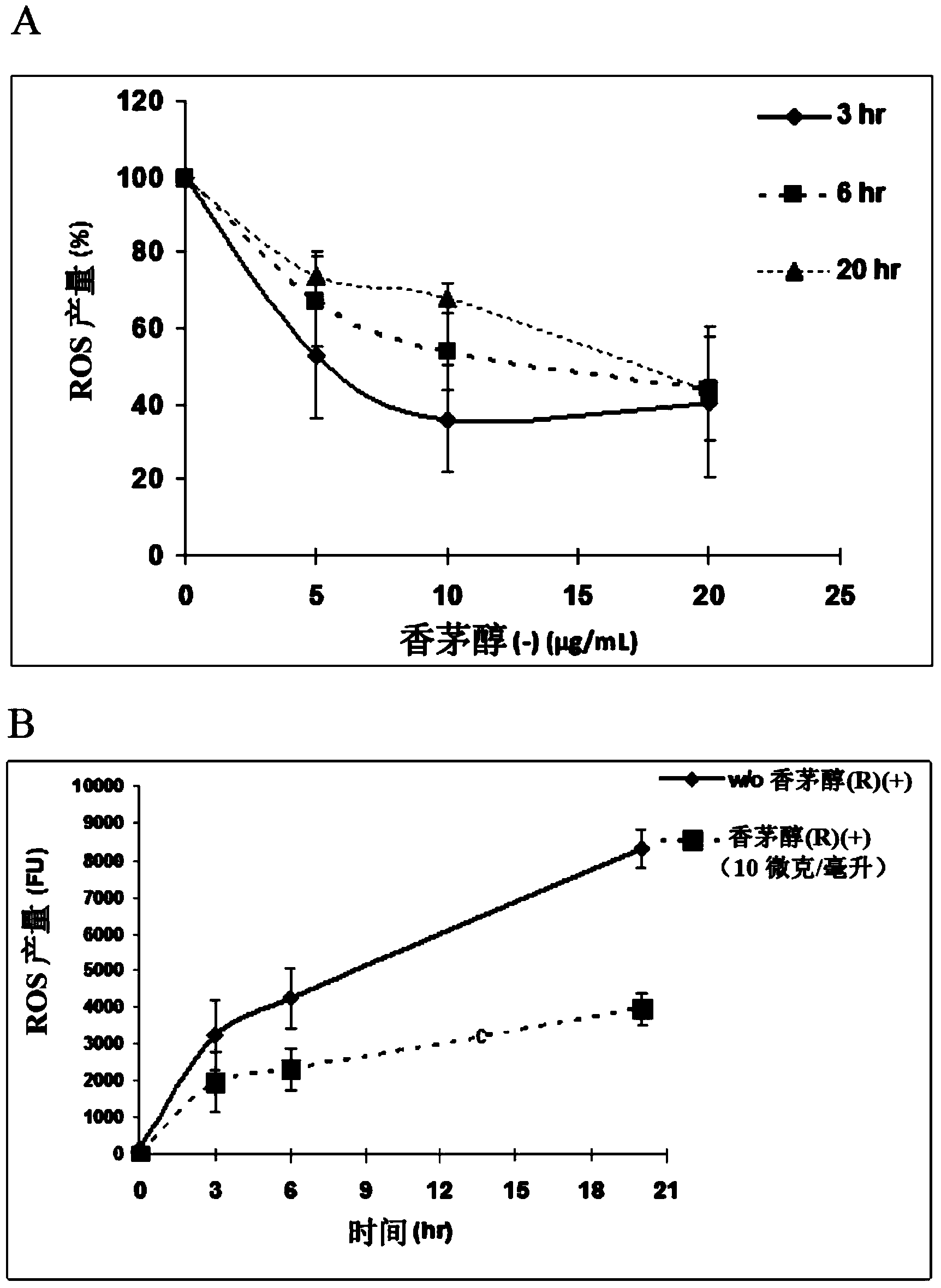Geranium oil and constituents thereof for treatment of neurodegenerative diseases
A technology of neurodegeneration and active ingredients, applied in nervous system diseases, organic active ingredients, active ingredients of hydroxyl compounds, etc., can solve problems such as lack of cholinergic neurotransmitters, cognitive decline, and lack
- Summary
- Abstract
- Description
- Claims
- Application Information
AI Technical Summary
Problems solved by technology
Method used
Image
Examples
preparation example Construction
[0029] Extracts of P. graveolens can be prepared by conventional methods. An exemplary extraction method will be described below. In general, the preparation method includes: (1) drying selected plant parts, grinding the dried plant parts into a fine powder; (2) mixing the plant powder with an extraction solvent; (3) centrifuging to remove plant residues , select the solution supernatant; (4) remove the solvent and water in the residual supernatant by rotary evaporation, and dry. One of ordinary skill in the art will recognize that the method can be appropriately varied, for example, from small, or laboratory, batch extraction to a commercial scale method. For extraction purposes, a drying process may also be unnecessary. Fresh plant material can be directly solvent extracted without a drying step. Dried plant parts offer shipping and storage advantages; however, plant extracts from air-dried plant extracts will be less active than freeze-dried extracts, possibly due to inc...
Embodiment 1
[0064] Example 1: P. graveolens components that inhibit acetylcholinesterase activity.
[0065] In this example, human erythrocyte acetylcholinesterase (AChE) was incubated with different concentrations of geranium essential oil or each of its components.
[0066] Preparation and GC-MS analysis of essential oils.
[0067] P. graveolens was grown under cultivation conditions at the Newe Ya'ar Agricultural Experiment Station. Seeds were taken from a frozen seed bank and sown at the Newe Ya'ar Agricultural Experiment Station. Plants were grown on local clayey soils under drip irrigation as described in Dudai et al., (2003), Flavor and Fragrance Journal, 18, 334–337. Plant samples of at least 5 kg were steam distilled in a 130 L direct steam pilot plant unit for 1 hour. Essential oils were distilled with petroleum ether and injected into GC-MS, MSD (Agilent Technologies, Palo Alto, California, USA) with an autosampler Combi Pal (CTC Analytics, Zwingen, Switzerland), equipped wi...
Embodiment 2
[0070] Example 2: Differences in AChE activity between enantiomers of citronellol
[0071] Geranium essential oil contains two enantiomers of citronellol, namely [(R)(+):(S)(-)], in a ratio of about 80:20. Therefore, the inventors have tested the effect of both enantiomers on enzyme activity. As illustrated, only the enantiomer (S)(-)citronellol inhibits the enzymatic activity of acetylcholinesterase, while (R)(+)citronellol does not. image 3 It was shown that the difference between the different enantiomers of citronellol for AChE activity is significant. The different enantiomers of citronellol were incubated with human erythrocyte acetylcholinesterase (25mU / mL). A commercially available kit (Arbor assays Acetylcholinesterase Fluorescent Activity Detection Kit) was used to determine the activity of acetylcholinesterase.
PUM
 Login to View More
Login to View More Abstract
Description
Claims
Application Information
 Login to View More
Login to View More - R&D
- Intellectual Property
- Life Sciences
- Materials
- Tech Scout
- Unparalleled Data Quality
- Higher Quality Content
- 60% Fewer Hallucinations
Browse by: Latest US Patents, China's latest patents, Technical Efficacy Thesaurus, Application Domain, Technology Topic, Popular Technical Reports.
© 2025 PatSnap. All rights reserved.Legal|Privacy policy|Modern Slavery Act Transparency Statement|Sitemap|About US| Contact US: help@patsnap.com



